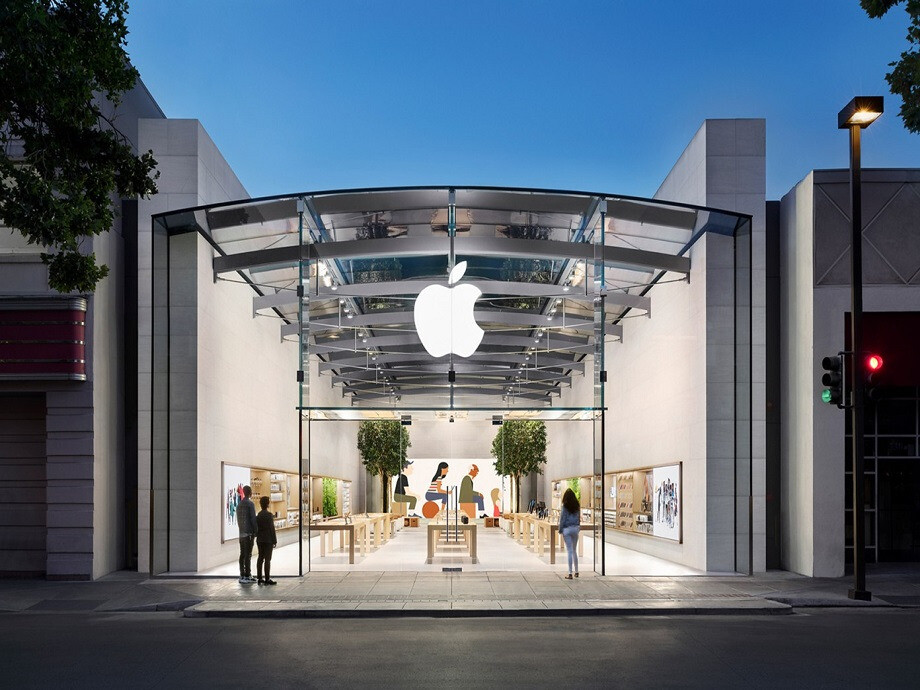
The technology behind Contactless
When you hear the word Contactless, what springs to mind?
Over the past year, keeping our distance from people and objects has become part of life, as the world has adapted to the constraints of the COVID-19 pandemic. That's pushed Contactless technology to a more prominent position. But when we talk about Contactless, what do we mean? How does the technology work? And which uses does it have? That's what we will discuss in this blog.
Does Contactless equal Contactless payment?
For many people, their first encounter with Contactless technology will be Contactless payment. These days, all it takes is the swipe or tap of a Smartphone, and you can pay for goods in a store without having to take out cash or a credit card. In this form, Contactless technology has ushered in a new level of convenience and security, while also reducing contact between people and things as we practise safety measures such as social distancing.
But Contactless isn't just about payment. Before we talk about the other Contactless use cases, what about the technology itself? Most of the time, Contactless technology is actually referring to Near Field Communication (NFC) technology. While Contactless can be a catchier and more consumer-friendly name, NFC is the technology behind it. Let's have a look in more detail...
What is Near Field Communication technology?
Near Field Communication, commonly known as NFC, is a technology that allows two devices to communicate with each other when they are fitted with an NFC chip. At least one of these two devices needs to have a power source to facilitate the exchange. The device with the power source could be a Smartphone, or another type of mobile device that is connected to the Internet. The connected device will usually carry apps that communicate via NFC (but this is not always necessary). The other device could be another mobile device, or could be an NFC Tag or NFC Product, which can be embedded and installed in a broad variety of objects, allowing the device to 'talk' to them by providing marketing content or any other relevant information - opening up a whole new World of digital communication.
Where does the NFC name come from?
Let's study the term 'Near Field Communication' more closely. We know that NFC refers to what many people call Contactless technology; enabling communication between two NFC-enabled devices in close proximity. It is this close range which is where the 'Near Field' part of the term originates from.
The technology itself goes back further than you may have thought; RFID and Barcodes are examples of older Contactless technologies. But NFC stands out from these technologies, offering a new range of benefits for consumer and business applications. This can be partly attributed to the emergence of Smartphones, the majority of which, today, offer NFC capability. Now let's look at how NFC works...
NFC: How does it work?
NFC works according to the wireless principle, sending information via radio waves. As we mentioned earlier, NFC is based on earlier types of wireless technology such as RFID, and transmits information through electromagnetic induction. It is the two loop antennas that facilitate this electromagnetic induction, when the communication happens between the two devices involves in an NFC exchange. One of the key characteristics that makes NFC different from other wireless technologies like Bluetooth and WiFi is its ability to activate the electric currents of passive components.
An NFC device can work in three different defined modes; Peer to Peer (P2P), which is an ad-hoc exchange of information between two NFC-enabled devices; NFC Card Emulation, which enables NFC-enabled devices such as Smartphones and other devices to work in a similar way to 'smart cards', being used for Contactless payment and ticketing; and NFC Reader/Writer, allowing information to be read from passive NFC components such as NFC Tags and NFC Products by NFC-enabled devices such as Smartphones.
How is NFC being used?
We've defined NFC and what it does, but what about the technology's possibilities? As we have covered, Contactless payment and NFC go hand-in-hand, but it is important to recognise that there are so many other ways in which NFC can be used. Let's take a look at how various applications and industries are benefitting from NFC:
Marketing
Right from the time when NFC-enabled devices such as Smartphones and Tablets were first able to read NFC Tags, the potential for NFC in marketing has been huge. Because of the speed (an almost instant transfer of data) and convenience (NFC Tags can be stuck almost anywhere) of NFC, a plethora of marketing opportunities have arisen.
The beauty of NFC chips for marketing is that they can be embedded in such a wide range of objects. From magazine pages to Keyrings, Posters, Beer Mats - you name it. All you need then is a Smartphone to be swiped at a close distance from the NFC-enabled object, and the holder of the Smartphone device can be offered engagement such as product information, a media download, or be encouraged to follow a social media account.
The truth is there is a limitless number of marketing campaigns that can be run via NFC; their theme and how they work will come down to the creativity of marketers themselves. Print advertisements can now invite readers to enter a competition by swiping their Smartphones. NFC Pens, which are a great branded giveaway at live events, now have a double function, being able to act as a downloadable 'business card'. And with NFC Smart Posters, they could be used for forthcoming films that will provide cinema times and even trailer videos directly to a device.
When NFC is used in this way, there is an important distinction to be made. Unlike the Contactless payment method which you might most readily associate with NFC, the way this marketing use of NFC works is that information is being transferred from the NFC chip (Tag or Product) to the reading device (Smartphone), rather than the reading device transferring data to the NFC chip itself.
Monitoring
There are very few organisations that don't need to conduct some form of monitoring, and this is another role in which NFC has proven to be a winner.
Employee time tracking on commercial, industrial and retail sites can be Contactless thanks to NFC. Employers are able to monitor when and where an employee has been on-site, and even track their use of machinery. NFC tagging can be a way of asset tracking, employed as an anti-theft solution that allows you to track inventory and portable assets in real-time.
Large health facilities have also reaped organisational benefits with a new ability to monitor the number and location of hospital bed spaces on an ongoing basis. NFC technology is helping to cut out inaccuracies and save the precious time of healthcare professionals, freeing them up to work on other tasks. But NFC benefits aren't only confined to hospitals in healthcare; carers can now track and verify visits automatically, allowing patient caseloads to be managed more effectively.
Authentication
NFC is excellent for product authentication, and the benefits work both ways. Consumers can be confident that they are buying genuine products, and retailers can protect their reputation while giving peace of mind to buyers.
Given their value, perhaps it is no surprise that luxury goods are increasingly benefiting from NFC authentication. From designer handbags to high-end watches - an NFC Tag can be opened via an official app from the manufacturer, in order to prove authenticity. NFC Tags don't have to be embedded into products themselves; they can also be contained within warranty cards issued by retailers at the point of sale.
White goods - like fridges, freezers, microwaves and washing machines - are other products in the high price ranges that can be authenticated with a simple NFC Tag in the form of a sticker. It allows consumers to ensure not only that a product is genuine, but that it is new and has not been pre-owned.
Industry 4.0
Industry 4.0, the Fourth Industrial Revolution, or 4IR - they are all terms that have been given to the latest industrial revolution, which is based around technologies such as Artificial Intelligence (AI) and new communication forms. Innovations such as Robotics, Quantum Computing and the Internet of Things (IoT) are breaking down the barriers between the physical and the digital.
As one of IoT's core components, NFC is right at the forefront of Industry 4.0. IoT networks are connected items with the ability to transfer data to one another, and this makes NFC a binding technology, able to offer businesses across multiple industries the opportunity to increase their operational efficiency. Take the factory site manager for instance - he or she can now track the levels and location of stock at any given time thanks to the IoT and NFC.
The UK government has allocated millions of pounds to AI in recent years in a new wave of tech spending, and this is another area in which NFC can be critical. Self-learning machines and chatbots can use NFC to enable the communication chain that gives them the capability to send and receive information. And a huge investment in electric charge points for cars has also been underpinned by NFC, with a 'Tap to Charge' system being launched for drivers by using their Smartphones.
So while Contactless payment might be the most attention-grabbing example of NFC, be in no doubt; this is a technology that is all around us, helping this, and future generations to become more efficient.


Comments